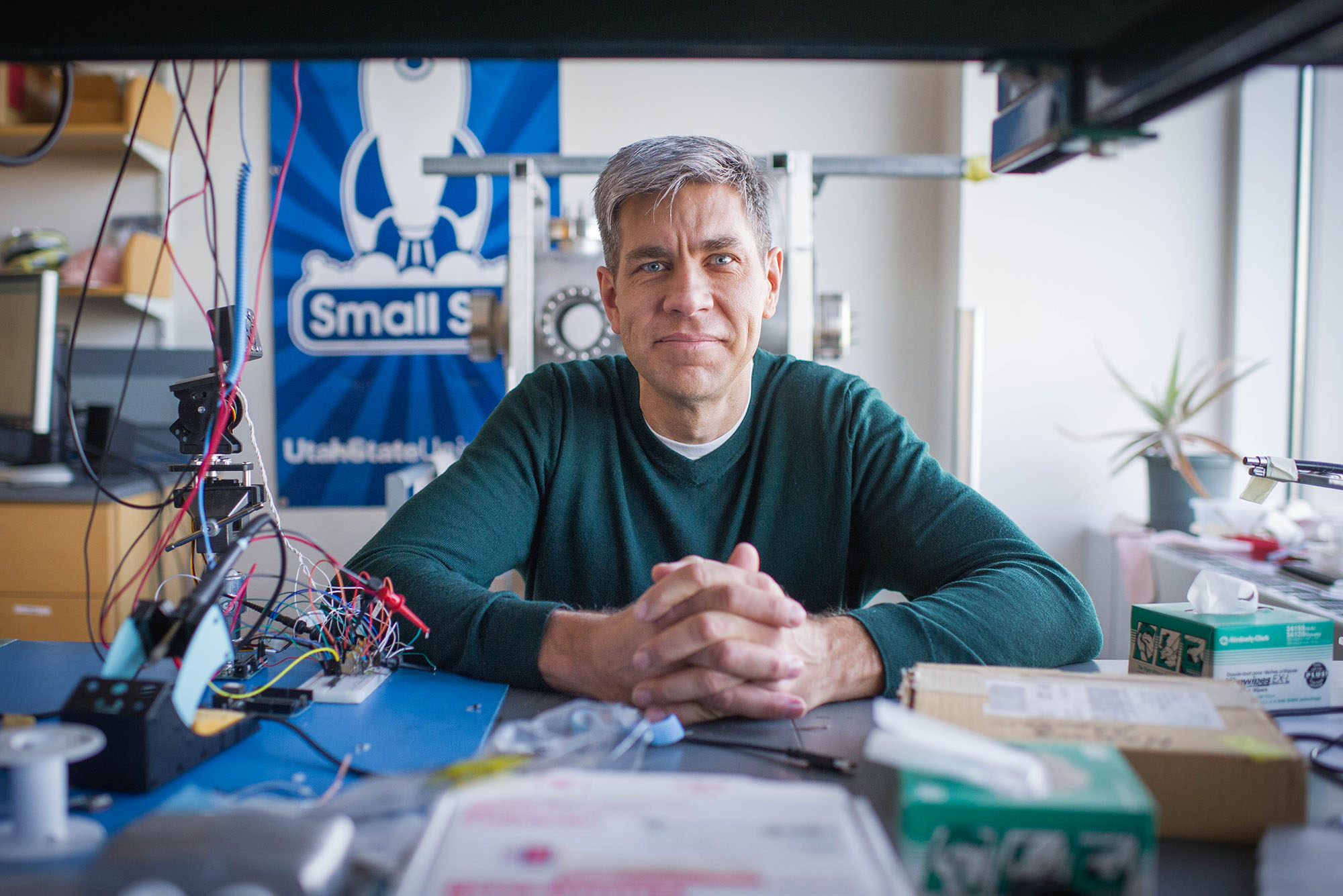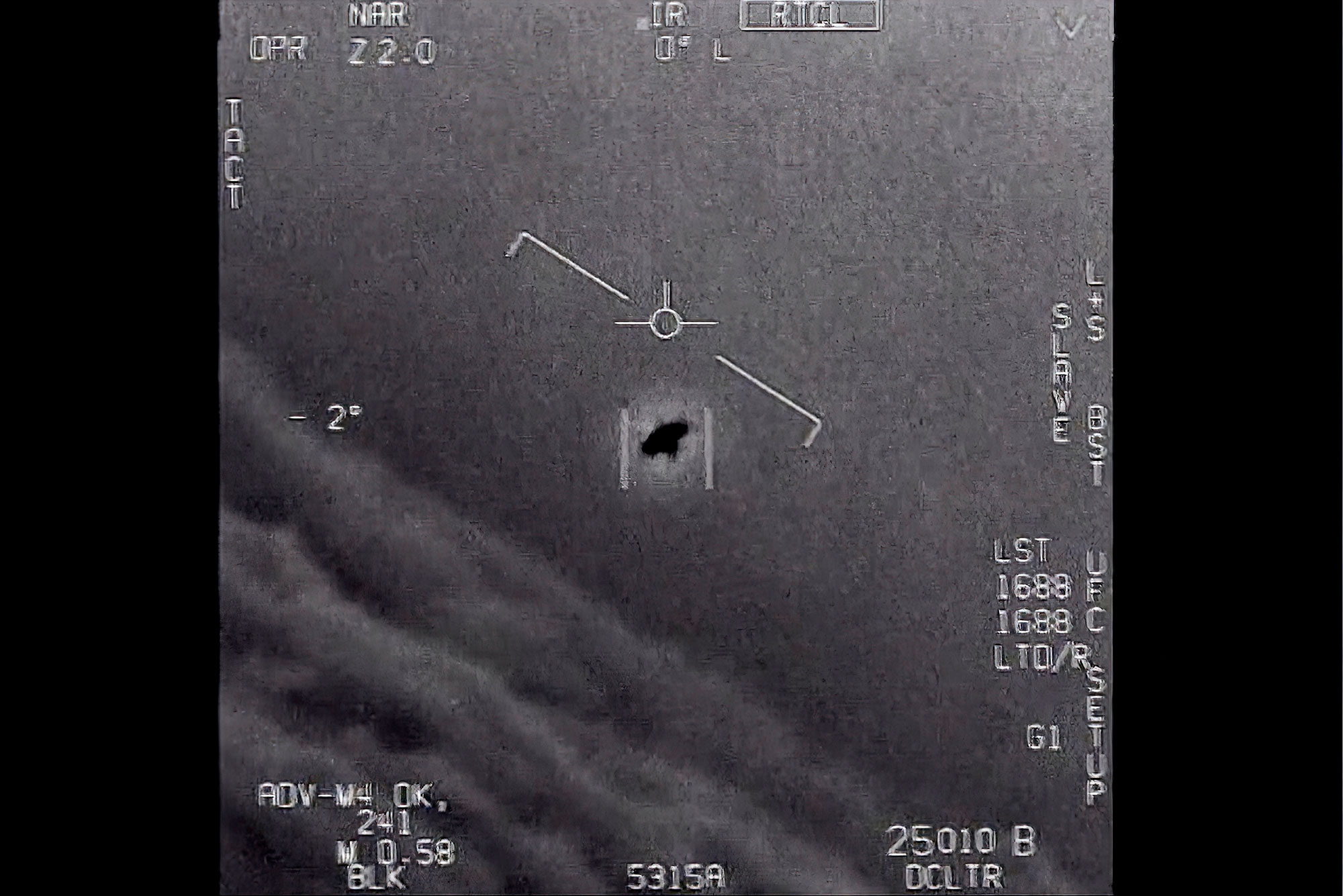BU Astrophysicist Joins NASA Team to Study UFOs
Over the next nine months, Joshua Semeter will study footage of unidentified flying objects to help figure out their origin

Joshua Semeter, a Boston University College of Engineering professor, is an expert on using sensors and atmospheric signals to better understand the Earth’s atmosphere.
BU Astrophysicist Joins NASA Team to Study UFOs
Over the next nine months, Joshua Semeter will study footage of unidentified flying objects to help figure out their origin
It’s not a bird or a plane, but there are objects in the sky that we can’t quite explain. Fascination with unidentified flying objects was reignited last year with the release of the US government’s first UFO report; an updated defense-intelligence report was due last month.
Despite popular images of flying saucers crashing through trees or little ETs turning up Earthside, one of the challenges with UFOs—now officially called unidentified aerial phenomena, or UAP—is that we can’t clearly see the objects in question and haven’t been able to properly study them.
“One of the problems is that the instruments used to record these things were not designed for this purpose whatsoever,” says Joshua Semeter, a Boston University College of Engineering professor of electrical and computer engineering and director of BU’s Center for Space Physics. Many UAP sightings come from Navy pilots, who have the technology to shoot objects down, not take a high-resolution picture, he explains. Semeter has been appointed to a NASA team charged with studying UAPs and creating a roadmap to better observe, study, and ultimately identify the phenomena.
Even though UFOs are not believed to be extraterrestrial, it’s enticing to imagine that maybe, just maybe, there’s more we can’t explain. Officials say the most likely explanation for UAP sightings are surveillance operations by foreign powers or weather balloons—but most documented accounts remain unexplained.
“It excites the imagination,” says Semeter. His research focuses on the ionosphere—the layer of the atmosphere that interacts with solar wind and the magnetic field of Earth, creating phenomena like the aurora borealis. He also looks at other atmosphere and ionosphere events, such as how the ionosphere interferes with GPS signaling. Semeter’s speciality of using sensors and atmospheric signals to better understand the environment makes him well suited for the job of uncovering UAP mysteries.

He and the NASA team of 16 aerial-space experts first convened in late October, and over the course of nine months, will figure out the best available tools and techniques for investigating the origin of UAPs. They will use existing data and declassified footage from a range of government departments, commercial data, and other sources to make recommendations. Their full report is expected by mid-2023, according to NASA.
The Brink spoke to Semeter about the task ahead, how his research on the ionosphere is related to UAPs, and what he hopes the NASA-assembled team will accomplish.
Q&A
with Joshua Semeter
The Brink: Can you explain how this group came to be?
Semeter: Well, some strange video evidence leaked into the popular press around 2007 that came from conscientious fighter pilots who were seeing things they couldn’t explain. They thought their testimony wasn’t receiving proper attention, and after years of pushing, the US Department of Defense (DOD) decided to declassify some of the footage. Over the years, a lot of speculation has ensued [about what these objects are]. The DOD can’t release all of their methods and technologies to the public because there are bona fide national security issues at play—this creates fertile ground for conspiracy theories and things like that. So, NASA decided, correctly I think, in collaboration with DOD, that they have an important role to play in helping understand how to explain what we’re calling unidentified aerial phenomena.
The Brink: Why are they called UAPs, and not UFOs?
Semeter: UFO has come to refer to the source of the phenomenon as being extraterrestrial. If you ask anybody what UFO means, I’m sure they would tell you, “Oh, yeah, that’s aliens visiting the planet.” UFO no longer has the ability to refer to terrestrial technologies that haven’t been identified yet—which, so far, with the limited data we have, is the most likely explanation. UAP is a better, unbiased term.
The Brink: What will the group be doing?
Semeter: There’s no UAP expert on the panel, and that’s by design. It’s made up of scientists, technologists, an oceanographer, educated observers like a couple of fighter pilots, all who bring their own unique perspectives. We’re putting a critical eye on the available data, which is very limited. Then, figuring out what recommendations we can make going forward in terms of how to direct NASA assets toward researching this problem. One of the problems in the DOD sector is that the instruments that they’ve used to record these things were not designed for this purpose. You can imagine that, right? If you’re on a combat aircraft, your instruments are designed to detect targets and help you shoot them down. They’re not designed to carry out fundamental scientific research. In the spectrum of work from NASA, all the way from cosmology and astrophysics to Earth observing, it’s all sensor-related. The types of sensors that are staring down at Earth from orbit may not be optimized to detect and understand small objects that appear in the fields of view, but we will be trying to understand the available data, how it might contribute to the small minority of these phenomena that are not yet explained or accounted for, and make recommendations for observational programs going forward.
The Brink: How is your research related to UAPs?
In my work at BU’s Center for Space Physics, I am primarily interested in plasma physics and the ionized layer of Earth called the ionosphere. This plasma environment [in the ionosphere] interacts with the magnetic fields of the Earth, interacts with the solar wind, and produces a lot of different phenomena that affect technologies and the planet’s habitability. Atmosphere and ionosphere interactions produce phenomena that we don’t understand. We try to develop physical theories, physical models, we try to develop sensing technologies that can better resolve it. So, I have a lot of familiarity with applying radar, radio, and optical sensing technologies to understanding natural phenomena. It’s a good fit for trying to understand unknown technologies we may be observing.
The Brink: What goes on in the ionosphere?
Every planet is going to have some atmosphere around it, some body of gases that reside near the surface and maybe change in various ways as we go upward in altitude. The atmosphere becomes thinner as you go up in altitude. And at the same time, the sun is injecting energy in the form of light and heat and ionizing radiation. At some altitude, you have a combination of energy and low density that produces ionization and forms a layer of plasma that’s electrically conducting. As most people see it, plasma is the fourth state of matter. The ionosphere is evidence for a shielding mechanism that keeps ionizing radiation away from us….The evolution of us in our habitable environment has a lot to do with what’s happening at the higher altitudes where we find this plasma environment and where we find interactions with magnetic fields. And that magnetic field also helps shield out particles that could be deleterious to our health and our existence here.
The Brink: What do you hope the group will contribute to our understanding of UAPs?
The panel is designed to figure out a roadmap, where we need to go, not to actually resolve this mystery. We want to know what NASA assets can be tuned and turned on to this problem. We want to make specific recommendations about what NASA could do to answer specific questions. We’re trying to play a role that’s consistent with NASA’s mission, which is being rigorous about fundamental science and addressing this from a scientific perspective.


Comments & Discussion
Boston University moderates comments to facilitate an informed, substantive, civil conversation. Abusive, profane, self-promotional, misleading, incoherent or off-topic comments will be rejected. Moderators are staffed during regular business hours (EST) and can only accept comments written in English. Statistics or facts must include a citation or a link to the citation.